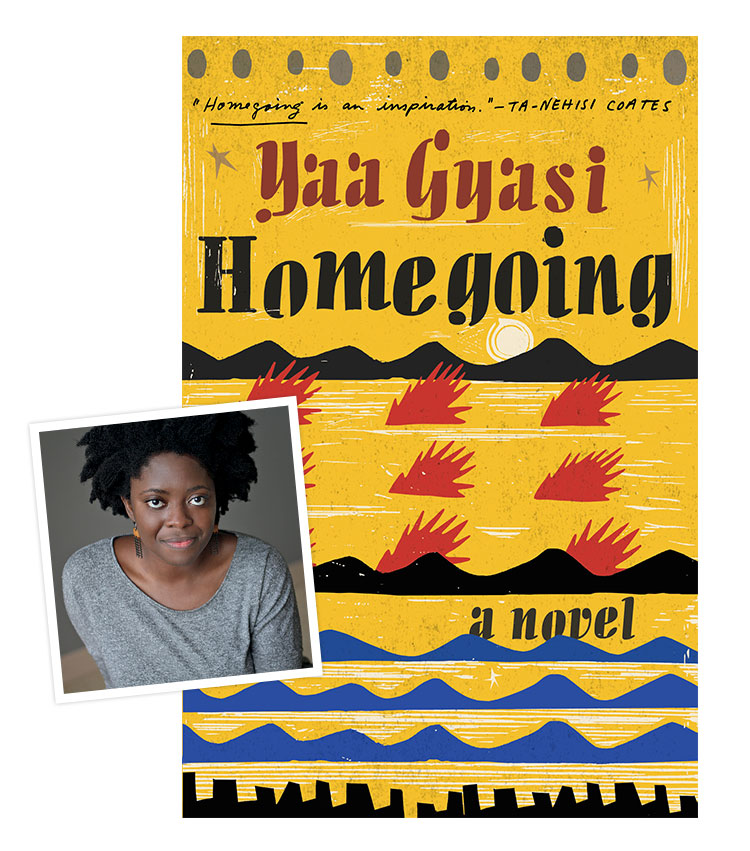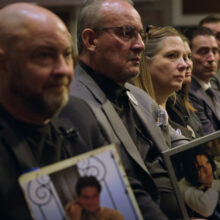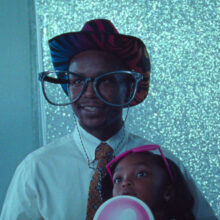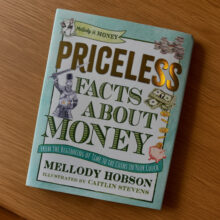
Homegoing, Yaa Gyasi’s debut novel, begins with the tale of two half-sisters in 18th-Century Ghana. Effia is sold to and marries a British slave trader, and lives in relative wealth at Cape Coast Castle. Esi makes her way to the castle as well — but to its dungeons, as a slave waiting to be shipped off to the New World. The rest of the book traces the lives of their descendents, alternating from one bloodline to the next, beautifully unraveling across generations to present-day America. Gyasi’s subjects and prose tug at you, linger on the mind; you’ll marvel at the ambitious scope (over two centuries worth) that still makes you feel the intimacy of her characters and their circumstances. Here, we talk to the author about Homegoing and the writing process.
In 2009, I received a grant from Stanford University to travel to Ghana and collect research for a novel. At the time, I had a different idea in mind: a novel about mothers and daughters, and my mother is from the central region of Ghana. A friend and I decided to go visit Cape Coast Castle, kind of on a whim, and I immediately knew I wanted to write a novel that centered around the place. The tour guide was talking about how the British soldiers, who lived and worked in the castle, would marry the local women, which is something I had never heard before. From there, he took us down to see the dungeon — I was so struck by the idea that there could be free Gold Coast women walking up above, unaware of what was to become of the people in the dungeons who were about to be sent on the Middle Passage.
And the inspiration behind the book’s multigenerational structure…
That took me a long time to figure out. In the beginning, I thought the book would have a more traditional structure, taking place in the present, with flashbacks to 18th-Century Ghana. I wrote about 50 to 100 pages of something in that vein. I threw it out when I got to Iowa [Writers’ Workshop] because I realized I wanted to show the passage of time. If I just had the beginning and end, it would be easy to not make connections; it would be easy to not see how we got to the present.
My writing process during Homegoing…
I made a family tree that I put on my wall. The family tree had Esi and Effia and then their descendants, the time period during which the bulk of their chapter took place and one thing, historically or politically, that was happening in the background during that time, like the advent of cocoa farming in Ghana or the Slave Act. Once I did a bit of research on that, I would just write the chapter. It was important to me to write chronologically and without an outline; I wanted the characters to have room to react to decisions that their parents had made, that their ancestors had made…
Author(s) who influenced me the most while writing…
I read One Hundred Years of Solitude right before I landed on the right track for this book. The fact that Gabriel García Márquez breaks so many of the rules that writers are so often told not to do, like having characters with the same letter in the beginning of their names, made me feel really free. I was in grad school while writing so I was reading my peers’ fiction, but I tried not to read too much outside fiction because I always get nervous or superstitious about other voices being in my head.
Chapter three, Quey’s chapter. It was set in England, for the most part, and that was challenging because it was the only time I couldn’t get enough research to make me feel comfortable in the world of the character. I had read about these children of unions between the local Gold Coast women and the Europeans, but I couldn’t find much about what became of them once they went to school, if they went to school abroad. That was the only time during the process of writing that I felt stifled by the research.
Favorite line in the book…
The proverb that opens the book is really important to me, as a way of reading the book but also thinking about the larger historical and political implications of this book. (“The family is like the forest: if you are outside it is dense; if you are inside you see that each tree has its own position.” — Akan proverb)
Book that made me want to be a writer…
I was a really big reader when I was a child. We moved around a lot, and I think books were really an anchor for me. And very early on, reading and writing went hand in hand; I was trying to see if I could do the things that I was reading. So I had always written these little stories for myself and didn’t think anything of it. It wasn’t until I was 17 that I read Song of Solomon by Toni Morrison that I felt this kind of pivot from wanting to do this as a hobby and wanting to do it seriously.
Best writing advice received…
I had a teacher in a writing workshop tell me that I should try reading all of my work out loud to myself. He said it because I had a lot of grammar issues, mainly the fact that I would switch verb tenses really frequently. Aside from fixing that, reading out loud became a way for me to hear the rhythm of a sentence or paragraph. I started to really like it as both an editing and writing tool.
How I combat writer’s block…
I think it helps to just move on, to just go to the next chapter.
What I’m reading now…
Brit Bennett’s The Mothers, which is coming up in October. It’s a very intimate portrait of black female friendship, religion and black church, in a way that I hadn’t really read before.
Book I always give as a gift…
I usually try to hear what the person likes to read and find something around that.
If I could be any character in a book for a day…
When I was little I really loved The Rainbow Fish book. I loved the one fish with the super-glittery scales in the picture, so maybe I would be that fish.
More to explore in Culture
-
 Culture
4.21.25
Word of Mouth: ‘Can’t Look Away’
Culture
4.21.25
Word of Mouth: ‘Can’t Look Away’
-
 Culture
10.24.24
Word of Mouth: ‘Daughters’ on Netflix
Culture
10.24.24
Word of Mouth: ‘Daughters’ on Netflix
-
 Culture
10.24.24
Financial Literacy for Kids? It’s Priceless.
Culture
10.24.24
Financial Literacy for Kids? It’s Priceless.
-
 Culture
11.22.23
What’s Your Sign? Sagittarius
Culture
11.22.23
What’s Your Sign? Sagittarius
-
 Culture
10.19.23
What’s Your Sign? Scorpio
Culture
10.19.23
What’s Your Sign? Scorpio
